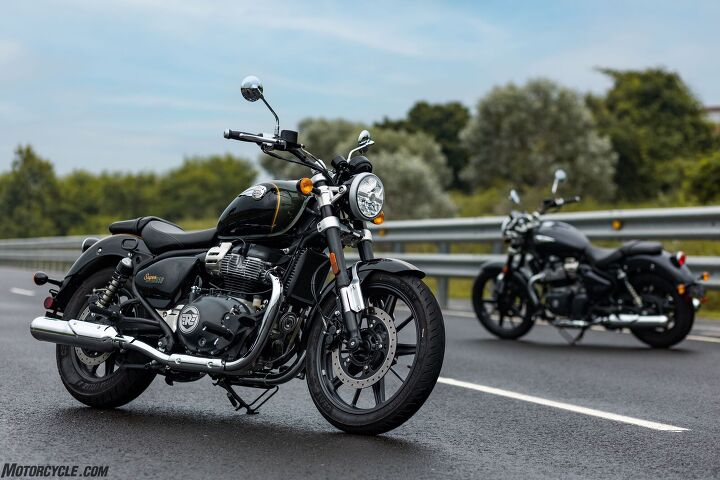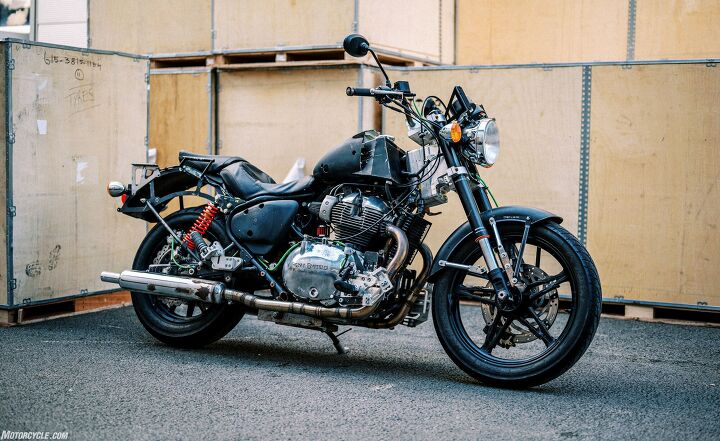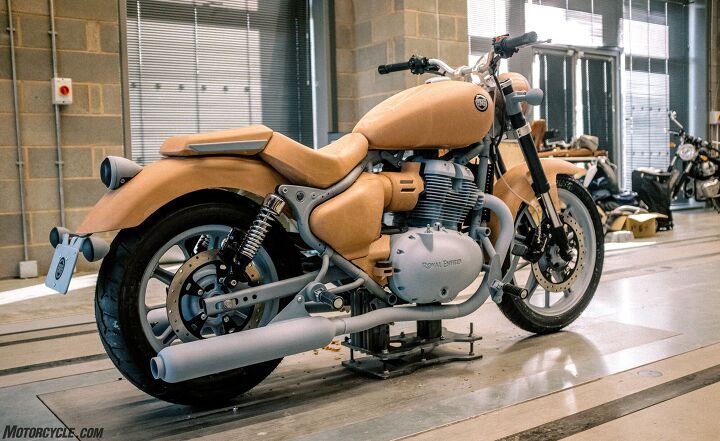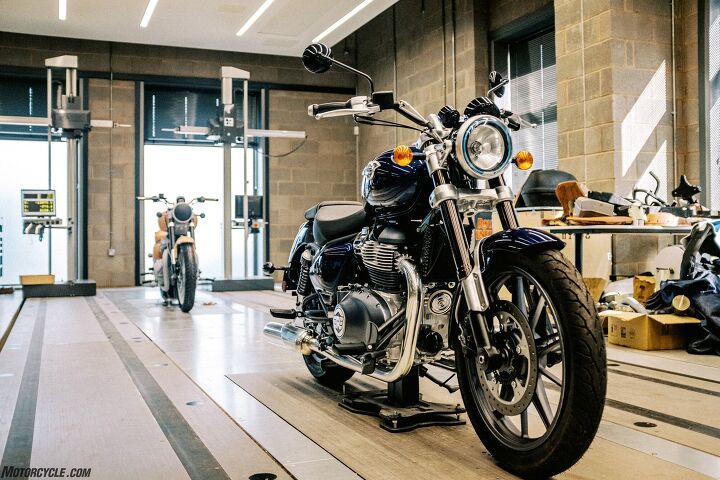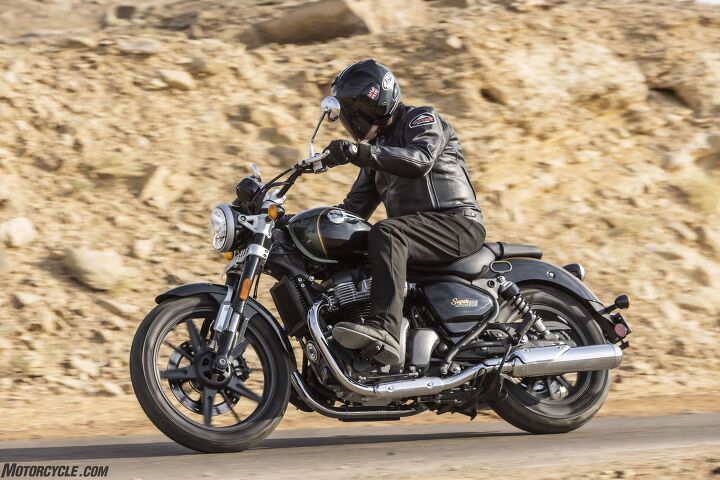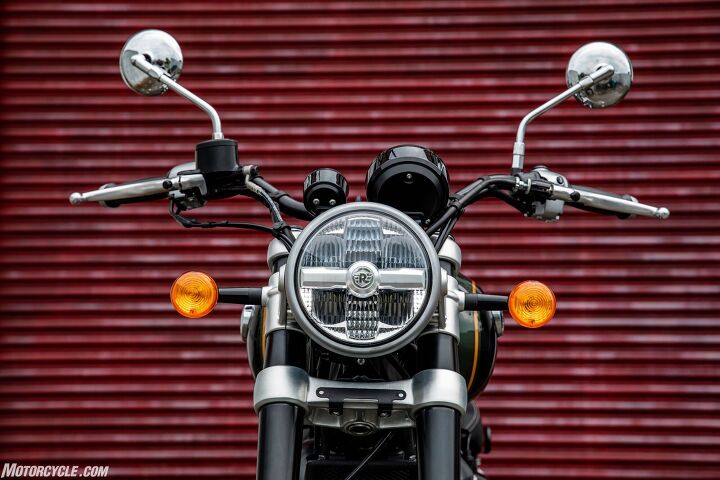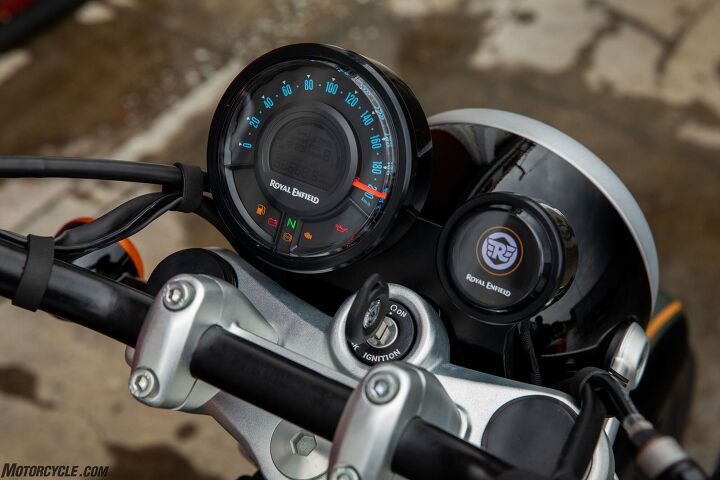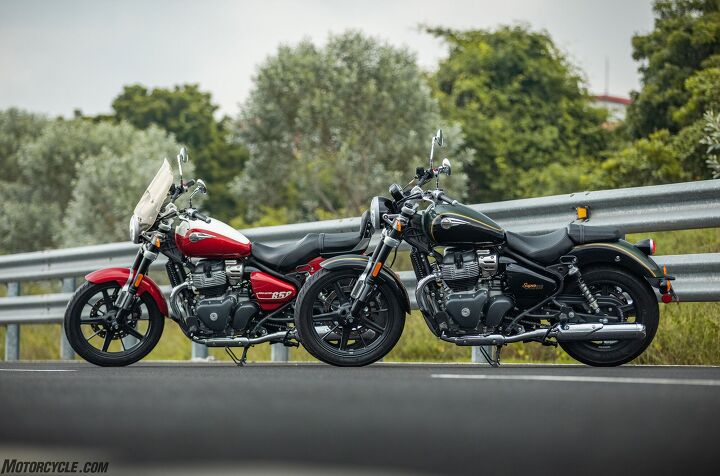Motorsports Racing News & Blog Articles
MO Interview: Royal Enfield Super Meteor 650 Designer Adrian Sellers
The man with overall responsibility for creating Royal Enfield’s first twin-cylinder modern-era cruiser is New Jersey native Adrian Sellers, 42, who after a four-year stint with Honda R&D in Italy and, before that, nine years at Yamaha’s Design Laboratory in Los Angeles, was appointed the Indian company’s Head of Custom and Motorsport in 2016, based at its UK Technology Centre at Bruntingthorpe. Let’s leave it to him to tell us how the ground-breaking Super Meteor 650 came about.
2023 Royal Enfield Super Meteor 650 Review
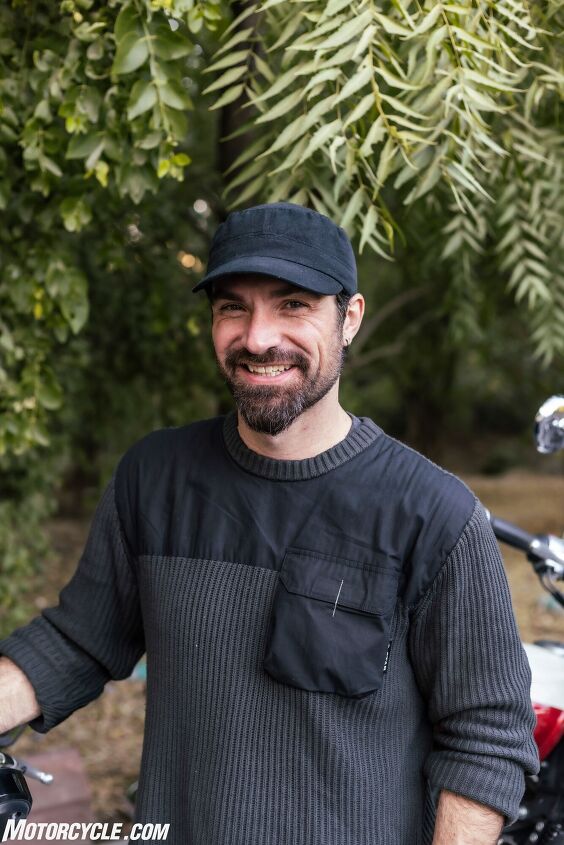 “In my previous roles I ended up doing a lot of research into the Custom scene, as part of keeping abreast of styling trends and so on. Custom has always been a very forward thinking arena for motorcycles – such bikes are pieces of artwork that you can do one-off crazy stuff with that wasn’t done before, which can then be brought into the mainstream. I became very interested in it as a function of research, and when I came to Royal Enfield, there was an opportunity to have a more direct participation in the segment. We began working on the Super Meteor pretty much as soon as I joined – it’s an all new platform for us, so yes, I guess you could say it’s the bike I was hired to produce.”
“In my previous roles I ended up doing a lot of research into the Custom scene, as part of keeping abreast of styling trends and so on. Custom has always been a very forward thinking arena for motorcycles – such bikes are pieces of artwork that you can do one-off crazy stuff with that wasn’t done before, which can then be brought into the mainstream. I became very interested in it as a function of research, and when I came to Royal Enfield, there was an opportunity to have a more direct participation in the segment. We began working on the Super Meteor pretty much as soon as I joined – it’s an all new platform for us, so yes, I guess you could say it’s the bike I was hired to produce.”
“When we created the 650 motor, we knew this was going to be a good basis for a lot of bikes, as with our Meteor 350 Single. And so even before I joined they had started to put together this multi-year, multi-model plan for the future, and that’s what we’re executing now – every one of these new twin-cylinder Royal Enfield models that are coming out now are part of that plan that was thought up over seven years ago. However, things happen during development, and so your plans may need to change in terms of the order in which each new variant is launched. Each model has its own unique set of challenges, and sometimes, one or more of them causes a delay. On this bike, we delayed it a bit just to get the finishes right, to make sure that our premium model really was going to be properly that. But there’s another motorcycle we’ll be announcing in due course that the Super Meteor overtook for that same reason – we’re very focused on getting each model just right before releasing it to the customer.”
“Our key objective in developing the Super Meteor was to design a proper cruiser in terms of the proportions, etc. – so that when people look at it, they’ll go, ‘OK, it’s a cruiser, I get that.’ But we wanted to keep the approachability of each Royal Enfield model, so we didn’t want to make it a big, huge bike, as per the Harleys and suchlike, we wanted to keep it tight and compressed. That’s where the standard base model cruiser came in – it was to be fairly compact, wide bars, but not too much, comfortable seat, but not too big, just a good balance of attributes. And then the Tourer took the customer in a different direction.”
“When we look at a motorcycle, it’s largely defined by its stance. Its purpose is determined by the way we sit on it, which defines the attitude of the bike and the styling lines that we apply to it. If you look at other segments like Retro Sports, or Roadster, or Adventure Tourer, they all have their own explicit nature that puts the rider in the position and therefore in the mindset of how to ride this motorcycle. For a cruiser, it’s a relaxed, commanding stance – that’s you chilling out on the road, mile after mile, with the confidence you get from the assertive presence of your motorcycle.”
“We set to work making sketch after sketch after sketch to understand how this blending of Royal Enfield’s heritage and the concept of a twin-cylinder cruiser should occur. We had a solid basis to go on in terms of a legacy, namely our Thunderbird 500 single, first introduced 20 years ago and only recently discontinued. So we could look at this and go, OK, this is what Royal Enfield has said a cruiser is for the last 20 years or so – but what do we want to do now? Then, we went forward in a direction we’d never gone before, and narrowed it down to three very similar concepts, which eventually found their way onto just one single sketch. And this sketch was then developed in CAD and in clay models until we were satisfied with the overall form – I think it took a good year and a half by the time we were all done with it.”
“More than usual, all of us across the company involved in creating this model, both in Design and in Engineering, are really proud of the end result, because this motorcycle is very, very close to that original sketch we started with. It kept the dynamic stance of the motorcycle, with a rising line running through the rear axle, up through the headlamp in a continuous motion. To the observer this motorcycle will hopefully look like it’s moving forward, even if it’s standing still.”
“A narrow waist makes it very easy for you to approach the bike, so you feel you have a sense of presence when you’re riding it – you’re the king or queen of the road. But at the same time, you’re not intimidated by the motorcycle in the dealership. You can walk up to it, you can throw your leg over it, and you can maneuver it easily when it’s not under power. These are all critical things to making this motorcycle seem accessible to our customer base. A nice wide seat, essentially the hips of the motorcycle, allows you to get on it and feel comfortable for mile after mile, but most importantly from a styling perspective, it says that before you’ve even sat on it for the first time. You understand that this motorcycle is going to be a good companion on long rides – but if you don’t believe it can do that, then we’re never going to sell it to you. And so we need to include that in the styling.”
“Part of that is its sit-in. When you have a Sportbike or a Roadster, for example, you’re sitting on top of the motorcycle. On a cruiser, it’s very important to sit within the motorcycle, to have that tank expanding in front of you, to feel the sweep of the bars in front of you, and the road in front of that. And that creates that sense of confidence, of relaxed and easy mile-eating that you want to have in your cruiser.”
“Of course, this is our premium motorcycle, it’s the top of our range, and so as befits that, we want to make sure you have all the details you could want in a premium finish. We have cast aluminum switch tubes, plated in prestige-looking satin chrome. Adjustable levers complement these, in a nice sweeping, retro design. This is the first time we’ve integrated an LED headlamp into our motorcycles, and carries on that tradition of new technology in our cruiser motorcycles – the Thunderbird featured a projector lamp for the first time. Matched with an LED tail lamp, we have a modern technology lighting set, but one that’s styled to match with our retro, simple, heritage design. We want to keep this pure, we don’t want it to feel like this is coming from the future, this is a Royal Enfield, so it needs to be timeless in its presentation.”
“Equally important, of course, is the rider view. You’re on this motorcycle for mile after mile after mile, this is your cockpit, this is your living room, this is where you’re going to be perhaps for days on end. And so we want to make sure that you feel proud of your motorcycle, not just when you walk up to it, but while you’re on it, every mile, whether you’re commuting, whether you’re touring, it doesn’t matter – we want it to matter to you. And so, with that in mind, we redesigned our twin pod clocks. It’s an analogue/digital combination like we saw on the Meteor, but now in a gloss, piano black treatment. Of course, as with the car you have a steering wheel you have that very nicely handled, on motorcycles we tend to skip this a little bit in our hand controls. These are things that you are interacting with more than anything else on the motorcycle, and we wanted to take a really unique look at how you’re interacting with your switch tubes, with your grips.”
“Maybe the most noticeable expression of quality you can put on a motorcycle is its colouring graphics. We wanted to focus on luxury, heritage, strength and sophistication on this model, and so we went through hundreds of designs to try to evoke that. The new badge design needed to take from our heritage, but also represent the Super Meteor itself, and so we came up with the final design matching the lines of the tank, which expresses both the nature of the Super Meteor, and also those elements of our heritage. There are seven distinct color and graphics directions, all of which have a unique identity, ranging from our Interstellar range in grey and green, our Astro range in blue and black and green, and our Celestial in red and blue. There’s something for everybody interested in the cruiser market here.”
“Last but not least, we have our 650 Twin motor at the heart of this motorcycle, and to respect the idea that this is a whole new platform for us, we wanted to give that motor a little visual refresh as well. And so we’ve redesigned all the covers to reflect that – a little bit more modern, a little bit more angular, to reflect the new positioning of this cruiser. To match that we have an all-new exhaust run, still keeping the twin headers from our current Interceptor and Continental GT, but keeping the silencers nice and low to the ground, tucked in as close as we could to the centre line of the bike, so that you have that easy cruising, low center of gravity.”
Want to get together with other Royal Enfield enthusiasts? Try the Royal Enfield Forum!
“Honestly, seeing the bikes out here in the beautiful weather we’ve had, has been amazing. You work on them in CAD, and sketching, and clay models for so long, it’s been wonderful to see them out in the real world. I’m very proud of the finishes we’ve achieved, especially the satin aluminum castings. I’m really happy with the proportions – it looks so close to the original sketches, and that’s not always the case, I can tell you! There’s no sense of feeling ‘I’m so happy it’s finally out there, but it could have been better if…’! There’s none of that here – I’m really proud we managed to keep it the way it was conceived, with full credit to our engineering team for pulling it off.
Become a Motorcycle.com insider. Get the latest motorcycle news first by subscribing to our newsletter here.
The post MO Interview: Royal Enfield Super Meteor 650 Designer Adrian Sellers appeared first on Motorcycle.com.
Copyright
© Motorcycle.com


